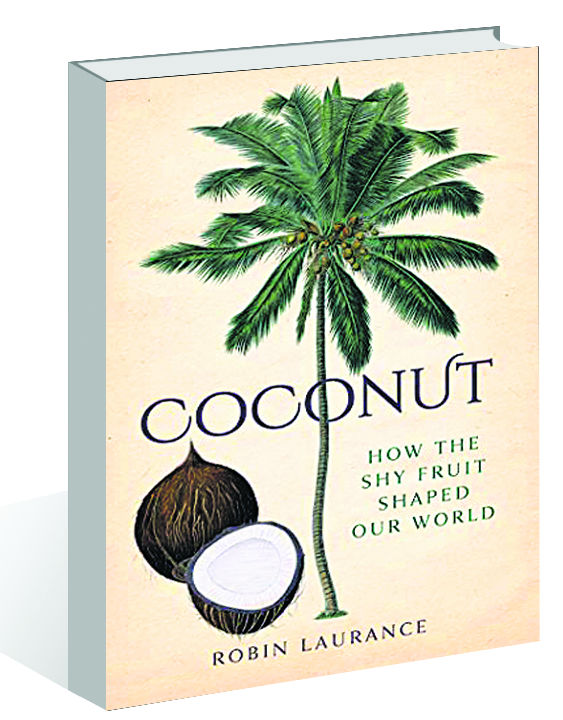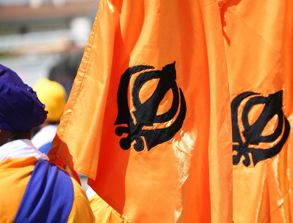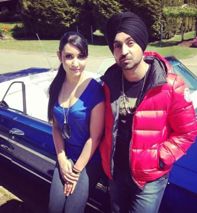Coconut: How the Shy Fruit Shaped our World by Robin Laurance. Niyogi Books. Pages 224. Rs450
Book Title: Coconut: How the Shy Fruit Shaped our World
Author: Robin Laurance
Ratna Raman
This is a delightful book about the lofty coconut, a fruit that soars high in the skies before it makes a downward descent into the world of men. It is time history of the coconut was written, because human beings have a way of diminishing everyday objects and things around them in their search for the forever new. The impressionists painted portraits of flowers and fruit and Pablo Neruda wrote poems around a host of everyday objects, but full-length studies on fruits have yet to catch up. This book is possibly the first recorded full-length history of the coconut’s adventures. The author, Robin Laurance, is a relaxed raconteur and has spent considerable time collating and tracing the history of the coconut in different historical periods and cultures. He tells us that the oldest coconut fossils belong to the Eocene period and go back 30 million years, and the fleshy fruit itself is a drupe, belonging to the same family as the cherry and the plum.
The book opens with a charming evening gathering, in a log-lit warm living room, attended by a host of people from all over the world from different time periods and zones, whose lives have been touched, shaped and influenced by the coconut. The coconut is really the first fruit on the planet and continues to play a significant role in human life.
The Hebrew Bible, the Tanakh, compares the stature and breasts of a beautiful woman with the trunk and fruit clusters of the coconut. As the coconut tree is loaded with many clusters of fruit, both heavy and large, imagining a woman with multiple breasts is a tad discomposing. Adding more visual excitement to this description of the coconut by the poets is the coco de mer: the twin coconuts which grow in Seychelles that look either like carved buttocks or the front genitalia of the female. Clearly, there exist connections between all living species, only it is taking humans an extraordinary time to discover these. However, the shell has been immortalised in silver and turned into drinking goblets, enriching the lives of silversmiths and woodcarvers and craftsmen in different parts of the world.
A long time ago, the coconut was viewed as exotic food, especially in parts of the world where it did not grow and arrived as part of the spoils from a strange new land, especially in parts of England and America. Documenting that the coconut was primarily a source of sustenance in the cultures where it grew, Laurance connects its forays to new countries with the burgeoning desires of men and women who encounter it, and records its multiple journeys across continents, shaping and being shaped by different demands.
A food source, natural beverage, hardworking fibre, outsider, hero, subaltern, financier, villain and war weapon are the innumerable roles that this fruit is pushed into essaying. We hear of how Imelda Marcos, the former first lady of Philippines, used the wood of the tree to carve out an extraordinary wooden palace, making it a place to marvel at for select visitors. Elsewhere, Kennedy survived on coconut water and meat on an island for a few weeks. When he needed to be rescued, the shell doubled up as a secret message container, thereby playing a double role in enabling him to eventually become a charismatic president of the United States. In the hands of merchant barons, coconut oil replaced wax in candles and tallow in soap, contributing to the fortunes of consumer goods companies by allowing them to refine their products and upscale them.
When scientists took over the inventing and producing weapons and counter weapons for world wars, the coconut shell, initially made into charcoal for the purposes of filtering water of its impurities, became a great filter for keeping out toxic mustard gas that was invented especially to disorient and destroy humans. Some of the really intimidating masks people were seen wearing during World War II were made of coconut shells.
This informative book provides us with a spectrum of narratives that make for delightful reading. Laurance’s namesake DH Lawrence also refers to the coconut that Mr Morel brings home for his wife from the fair in Sons and Lovers, at a time when ringing the coconut at a coconut shy became a popular activity in fairs. The assorted pictures in the book and at the end add enormously to the reader’s visual understanding. Somewhere in the book, speaking of the coconut being used in the war, Laurance remarks, albeit tongue in cheek, that this was not the coconut’s finest hour. While the remark is ironic, since the hapless fruit was never a free agent, it is a telling observation upon human beings in general and occidental notions of scientific discoveries and exploitation of nature which have taken a heavy toll on animals, vegetables, minerals and matter. Was the harvesting of the coconut a kinder process than the horrendous stories wherein people were butchered during the spice monopoly wars? A quick look at the cultures where the coconut palm has been a cash crop shows us impoverished, fragile and dependent communities. This new age colonialism, responsible for the impoverishment of cultures feeding the maw of expanding entrepreneurship, has always rewarded the maker of the finished product. The ultimate irony is that a food source was decimated to make napalm and the empirical scientific experiment not only selectively destroyed cities and burned citizens, but turned this elixir-like fruit radioactive on the atoll where games of war were staged. It is time to factor in the damage caused by inhuman exploitation and greed and provide redressal. We also need to go back to the drawing board, write out new charters around the rights of species, human and non-human, and draw up fair use, fair trade and minimalist policies, if we want our planet restored and its people healed.














